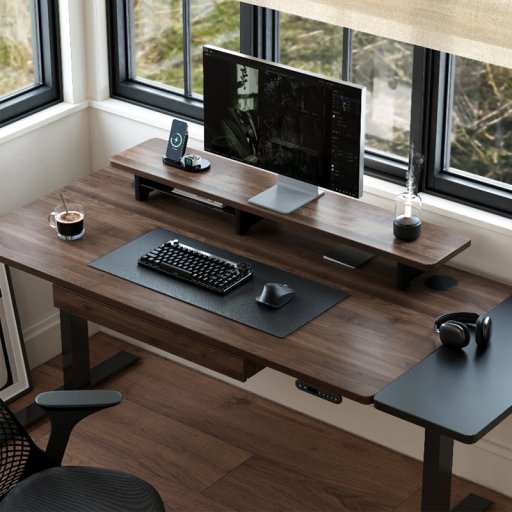

Standing desks have moved from novelty to norm in many workplaces and home offices, but the transition raises a lot of practical questions. As an ergonomist, I hear the same concerns every day: how long should I stand, will a standing desk fix my back pain, and which model actually fits my space? This FAQ-style guide answers those common questions with evidence-backed advice and pragmatic tips so you can use a standing solution safely and comfortably.
Short answer: usually yes, with a few caveats. A standing desk can reduce prolonged sitting and encourage micro-movements that benefit circulation and posture. However, it’s not a cure-all. People with certain medical conditions—severe orthopaedic issues, some circulatory disorders, or recent lower-limb injuries—should consult a clinician before making a big change. For most users, alternating between sitting and standing is the healthiest pattern: think dynamic movement, not static standing.
Begin by setting screen height and keyboard position. Your eyes should naturally hit the top third of the monitor when standing, with the screen roughly an arm’s length away. The keyboard should sit at elbow height so your forearms are parallel to the floor and wrists are neutral. Position the monitor directly in front of you to avoid twisting. Anti-fatigue mats and supportive shoes soften impact on the feet. Finally, adopt a gentle micro-movement routine—calf raises, small weight shifts, or short walks—to avoid standing still for long periods.
Look for stability at full height, a height range that accommodates your stature, and simple controls you’ll actually use. Memory presets are helpful if multiple people use the same workstation. Anti-collision sensors, decent load capacity, and minimal wobble are also worth prioritizing. A desk that’s easy to adjust encourages the crucial habit of alternating postures throughout the day.
Rather than rigid rules, aim for variety. A practical pattern many find comfortable is to change position every 30–60 minutes. Start with short standing intervals—ten to twenty minutes—if you’re new to it, then gradually increase. The overall daily goal is to break up long sitting bouts frequently; a handful of standing breaks spread throughout the day is more effective than a single long stint.
Corner desks are a smart choice if you need multiple work zones—one for a primary monitor and the other for paperwork or second tasks. L-shaped standing desks that lift both wings in sync preserve ergonomic alignment across the whole surface. They make multitasking smoother and save central floor space, which is why they’re popular in smaller home offices and design studios.
An executive model brings extra surface area, higher load capacity, and sometimes premium finishes. If you frequently use multiple monitors, paper references, or heavier equipment, an executive standing desk gives you room to spread tasks without compromising stability. For many home offices, a mid-sized lifting desk hits the sweet spot; choose an executive model if you need the space or want a more formal aesthetic.
Wood tops add warmth and can be very durable; solid or veneered wood also resists scratches in different ways than laminates. The choice often comes down to aesthetics, budget, and maintenance preferences. Wood can feel more substantial underfoot and integrates well with home décor, while laminates and glass options may offer easier cleaning and lighter weight. Either can perform well as long as the frame and lift system are robust.
Some buyers want to compare market options before deciding. A well-engineered standing desk typically features stable lifts, easy-to-use controls and durable surfaces. If you research brands, pay attention to motor quality, lifting speed, and cable organization. Many modern designs include programmable memory buttons so you can save ideal sit and stand heights — a convenience that matters when you switch positions many times per day. If you’re curious about a specific model, manufacturer pages and spec sheets are helpful starting points.
User reviews reveal how desks perform in real homes: whether the motors stay quiet, how the frame handles heavy monitors, and if assembly is straightforward. Look for balanced reviews that mention long-term durability and customer service responsiveness. Feedback from people who use desks daily — for both work and parenting multitasks — is especially valuable. Verified user experiences often highlight small but important details you won’t see in product photos, such as the feel of the control panel or the stability when leaning on the surface.
Start slow, prioritize adjustability and stability, and treat your workstation as an evolving system—not a one-time purchase. Track how you feel and tweak monitor height, keyboard position, and standing duration until you find a rhythm that fits your body and work demands. And remember: a standing desk is a tool for movement, not a replacement for regular breaks, stretching, or exercise.
Standing desks offer meaningful benefits when used with attention to ergonomics and movement. Whether you choose a stand-up desk, a corner L-shaped model, a wooden top, or an electric adjustable desk, the key is to build habits that mix sitting with standing and to use accessories that support neutral posture. If you have specific concerns or a complex health history, consult both ergonomics guidance and clinical advice—then test a setup gradually. With the right approach, a standing desk becomes a practical, health-positive addition to almost any workspace.